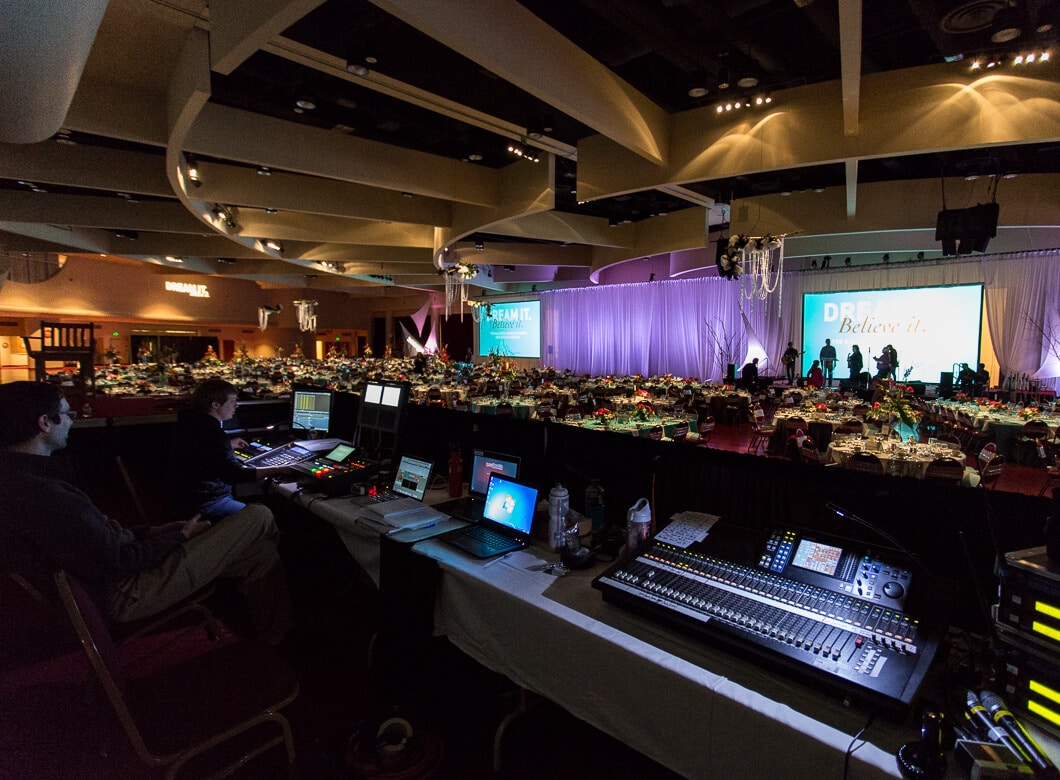The Three Top Tech Issues that Planners Face
And how to avoid the glitches in the first place
Excellent event planning means keeping the big picture in mind while tending to every little detail. We don’t need to tell you that planning a well-received event is far easier said than done. But we can tell you about few common tech-related issues that event planners face—and how to sidestep them so they don’t happen to you.
Top Tech Issue #1: Underqualified Information Technology (IT) and Audio Visual (AV) Staff
Or worse yet, no IT or AV staff on site at all. Because technology is changing so rapidly, it’s not enough anymore to just have a few part-time staff members who know how to run projectors.
Now, qualified IT and AV staff members—onsite and readily available—are key to a smooth-running event, especially since technology is shifting to become more internet based.
Planning tip: When choosing your venue, ask not only about the number of IT and AV staff members available to you, but also their specific experience and the services they provide. Also work with them before your event takes place to determine what should be handled in advance and what can be done on site once you arrive.
Top Tech Issue #2: The Wrong Adapters
Laptops new and old have a variety of video adapters, from analog to digital. The old standby VGA (which stands for video graphics adapter or viceo graphic array) port that connects computers and monitors is giving way to new digital connectors.
These days, you hear terms such as display port and HDMI (high-definition mulimedia interface), both which come in different sizes. In addition, there’s a new USB in town, the USB-C, which is not only faster but also reversible—but that also require adapters for older equipment. It’s a full-time job to keep track of it all.
Planning tip: Make sure your venue stocks adapters that will allow most video connectors to convert to HDMI. Also ask if it has switched yet to HDMI cabling, which provides crisp, high-definition presentations.
Top Tech Issue #3: PowerPoints with Out-of-Whack Aspect Ratios
We won’t get too techy here, but it makes a difference whether your PowerPoint presentations are using a 4:3 or 16:9 aspect ratio, which refers to the proportions of the height and width of an image. The most common is 16:9, so that means if the width is divided into 16 equal parts, the height of the TV or picture should equal nine parts.
Ignoring these ratios mean you could end up with a presentation that’s not full screen, or equally as annoying, images and text that appear squished or stretched to fit the screen.
Planning tip: Before your event, find out the aspect ratio of the projector you’ll be presenting on, so that you have a full-screen and professional-looking presentation.
With the right IT and AV team in place, you won’t have to worry about any of these three issues getting in your way. Good luck and happy planning!
To learn about planning a meeting at Monona Terrace, contact Laura MacIsaac , Director of Sales, at LMacIsaac@mononaterrace.com or 608-261-4016.

